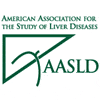 Study participants taking AbbVie’s triple combination therapy, plus ribavirin, to treat hepatitis C virus (HCV) showed high rates of adherence to the mediations. The pharmaceutical company presented these findings from the AVIATOR study at the 64th Annual Meeting of the American Association for the Study of Liver Diseases (AASLD) in Washington, DC.
Study participants taking AbbVie’s triple combination therapy, plus ribavirin, to treat hepatitis C virus (HCV) showed high rates of adherence to the mediations. The pharmaceutical company presented these findings from the AVIATOR study at the 64th Annual Meeting of the American Association for the Study of Liver Diseases (AASLD) in Washington, DC.
Included in the adherence analysis were 327 people with genotype 1 of hep C who did not have cirrhosis; they were divided into five groups, all of whom took the NS3/4A protease inhibitor ABT-450/r (which is coformulated with ritonavir), the NS5A inhibitor ABT-267, the NS5B polymerase inhibitor ABT-333, plus ribavirin for differing lengths of time. The first three groups included treatment-naive participants: A respective 80, 79 and 80 participants took the regimen for 8, 12 and 24 weeks. The remaining two groups included null responders to previous treatment: A respective 45 and 43 participants took the regimen for 12 and 24 weeks.
The study monitored pill adherence through a bottle for each drug that recorded the times and dates at which the bottle was opened during the study.
The adherence levels were similar for each drug between the eight- and 12-week groups. Between the 12- and 24-week groups, there were statistically significant differences in adherence. For example, the correct dosing of ABT-333 dropped significantly between the 12- and 24-week groups, and the timing of adherence to all three of AbbVie’s drugs was significantly lower in the 24-week group compared with the 12-week group.
The investigators found that this difference in adherence between the 12- and 24-week groups was driven by lowered adherence that began only after participants had taken therapy for 12 weeks. Nevertheless, the sustained virologic response rates at 12 weeks (SVR12, considered a cure) were similar between the 12- and 24-week groups, which had respective cure rates of 97 percent (120/124) and 94 percent (116/123).
Eighty-eight percent of participants (218/246) adhered to the entire regimen at a rate greater than 80 percent. Of this group, 96 percent (209/218) achieved an SVR12. Of the 28 participants who adhered at a rate lower than 80 percent, 26 of them—or 93 percent—achieved an SVR12.
To read the study slides, click here.
High Adherence in Those on AbbVie’s Hep C Triple Combo






Comments
Comments